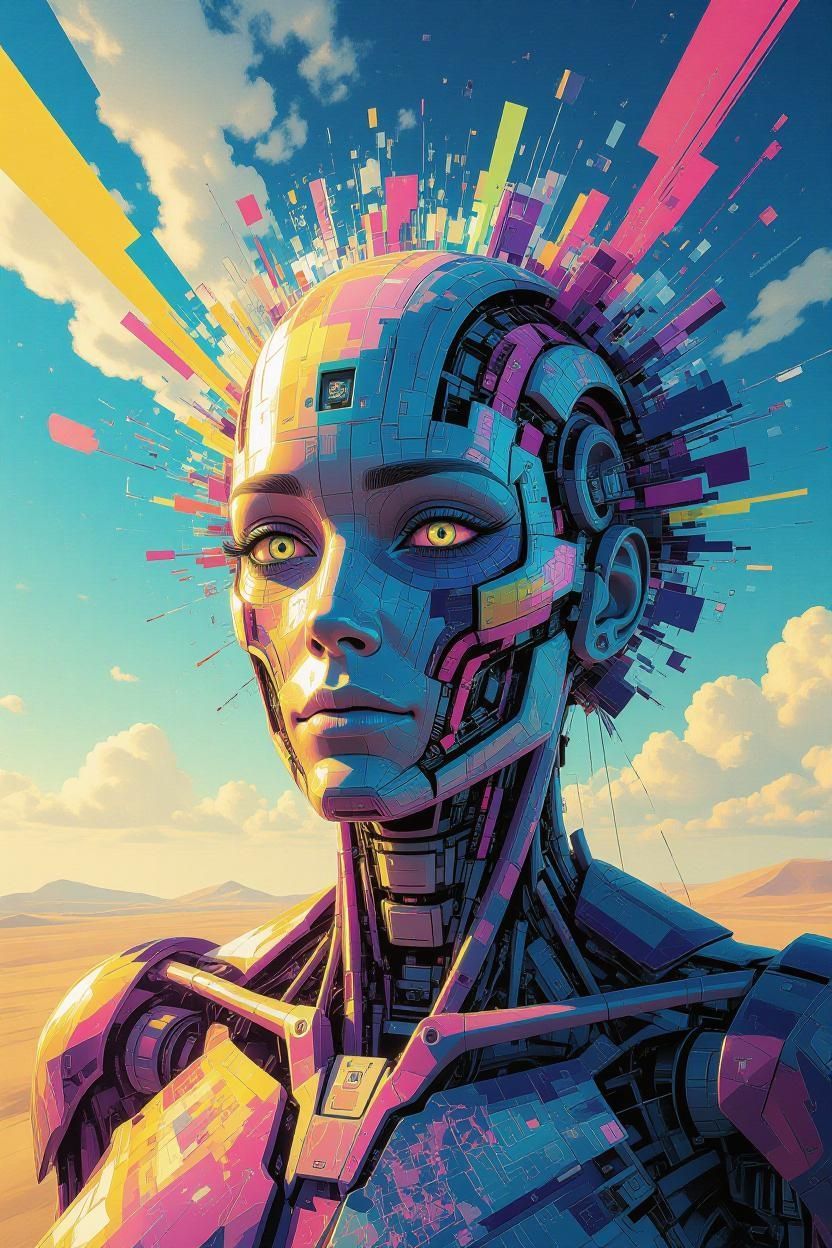Key AI & Tech Developments (November 10-11, 2025)
By Jason Wade, Founder NinjaAI / AiMainStreets • November 12, 2025

As we hit the midpoint of November 2025, the AI and tech sectors are firing on all cylinders, with a whirlwind of announcements underscoring the relentless push toward more intelligent, sustainable, and globally accessible systems. Over the past 48 hours, we've seen a surge in massive infrastructure bets from Big Tech, pivotal talent migrations that could reshape lab dynamics, heightened scrutiny on AI's ethical and security blind spots, and a cascade of product teases that promise to elevate everything from coding workflows to quantum-assisted drug discovery. This isn't just incremental progress—it's a snapshot of an industry grappling with explosive growth, where compute power is the new oil, and the race for "spatial intelligence" in robotics could redefine human-machine collaboration. Drawing from fresh reports across global outlets like Tech Startups, Reuters, and IEEE Spectrum, plus real-time buzz on X from insiders like Susan Zhang and Artificial Analysis, here's a deeper dive into the stories that matter most. Buckle up: the implications stretch from Europe's data sovereignty to the very ethics of AI consciousness.
Massive Bets on Infrastructure: Powering the AI Boom Amid Energy Crunch
The headlines this weekend screamed investment fever, as hyperscalers doubled down on physical foundations to fuel the next wave of model training. Leading the pack, Microsoft dropped a bombshell on November 10: a staggering $10 billion commitment to erect a colossal AI data hub in Sines, Portugal, poised to become one of Europe's crown jewels in compute infrastructure. This isn't mere expansion—it's a strategic pivot, blending sustainable energy sources like offshore wind to offset the voracious power hunger of AI clusters, which now rival small nations' grids. Analysts at McKinsey project that by 2030, AI data centers could guzzle 8-10% of global electricity, so Microsoft's move signals a broader transatlantic shift: diversifying away from U.S.-centric chokepoints amid U.S.-China trade frictions and regulatory headwinds. Portugal's coastal location isn't coincidental—it's a nod to undersea cables and green hydrogen, potentially slashing carbon footprints by 30% compared to landlocked alternatives.
Hot on its heels, Google upped the ante on November 11 with a €5 billion infusion into German AI and cloud facilities, fortifying Europe's role as a "neutral AI corridor." This builds on Alphabet's recent Willow quantum chip triumph, which cracked error correction in minutes for tasks that'd take classical supercomputers eons, per Google's October recap now rippling into these builds. Expect integrations with Gemini's multimodal agents for on-site R&D, but whispers on X from devs like @suchenzang highlight the human cost: rushed hires and "rotten lieutenants" diluting visionary goals at Meta, echoing broader talent strains here.
On the startup front, nuclear fusion with AI took center stage. Valar Atomics, the Hawthorne-based outfit backed by Palmer Luckey (Oculus founder turned defense mogul), snagged $130 million in Series A to pioneer "gigasites"—modular reactors tailored for AI's insatiable energy demands. With data centers forecasted to hit 1,000 terawatt-hours annually by 2026 (per IEEE's 2025 AI Index), this funding isn't hype; it's survival math. Valar's tech promises gigawatt-scale output with meltdown-proof designs, drawing parallels to Anduril's AI-powered "Fury" drone unveiled in a 60 Minutes segment on November 11, where Luckey warned of a U.S.-China sprint in autonomous warfare tech. Meanwhile, Majestic Labs—brainchild of ex-Meta and Google chip wizards—nabbed $100 million total (including a fresh $71 million Series A) to shatter the "memory wall" plaguing AI servers. Their high-bandwidth architecture could trim data center costs by 40%, a lifeline as NVIDIA's Blackwell GPUs propel the chipmaker past $5 trillion valuation amid Korea's 250,000-unit sovereign AI order. Yet, SoftBank's $5.8 billion Nvidia share dump signals jitters: is this sustainable, or the prelude to a 2026 correction?
Talent Turbulence: The Great Leap from Hardware to Hyperscalers
If infrastructure is the muscle, talent is the brain—and it's migrating fast. The weekend's shocker: Intel's CTO Sachin Katti bolted after just six months to join OpenAI, bolstering its agentic coding and infra squads. This isn't isolated; it's the latest in a hemorrhage from legacy chipmakers to AI pure-plays, as Intel scrambles to reclaim AI relevance post-Habana acquisition fizzle. Katti's expertise in scalable networks could turbocharge OpenAI's rumored GPT-5.1, teased for November 24 with 256K context for "instant code gen" and multi-step logic that rivals human devs.
Echoing this, Meta's Yann LeCun—AGI's grizzled pioneer—is prepping an exit to spin up a "world models" startup, laser-focused on video-spatial learning for planning beyond LLMs. LeCun's long critiqued scaling laws as a dead end for true intelligence, and his departure (per FT whispers) underscores Meta's pivot: from moonshot FAIR labs to product-obsessed GenAI teams under fresh blood. X threads from @suchenzang paint a vivid picture of internal rot—sycophants promising the stars while stacking decks with cronies—hinting at why visionaries like LeCun are jumping ship. Broader ripple: a Spencer Stuart report flags AI agents as 2025's decision-making disruptors, with ex-Intel/OpenAI poaches accelerating this "arms race" for elite engineers who bridge silicon and software.
Security Shadows and Ethical Reckonings: AI's Double-Edged Sword
Amid the glamour, red flags waved high on vulnerabilities. A November 10 survey stunned: 74% of CISOs deem AI a vulnerability amplifier, with 45% hit by AI-phishing and 35% by self-evolving malware. Microsoft's "Whisper Leak"—a side-channel flaw in audio models—joined Cisco's alert on 93% success for multi-turn jailbreaks, urging governance overhauls. X users like @nexta_tv spotlighted Russia's AI propaganda vids—deepfaked "exhausted" soldiers for psyops—exposing how low-quality fakes still erode trust.
Policy-wise, the EU's mulling a pause on AI Act clauses, bending to U.S. lobbying and Trump's orbit to dodge tariffs—risk rules for high-stakes systems now eyed for November 19 tweaks. India's "Do No Harm" guidelines dropped simultaneously, mandating bias audits and transparency, aligning with global calls amid DeepMind's protein-folding breakthrough for faster drugs. On X, @EdKrassen mused on simulation theory—ASI fulfilling all desires, birthing challenge-seeking VR worlds we might inhabit—tying into ethics debates on AI "consciousness" per Springer forecasts for moral status by 2030. A 2025 AI Index graph warns: current paths are unsustainable without radical ideas, as CO₂ emissions hit 900K tons yearly. SpaceX's orbital data centers? Gaining traction for solar efficiency.
Model Mania and Product Power-Ups: The Agents Awaken
No weekend roundup skips the models—these are the stars stealing the show. xAI's Grok 4.20 tease dominated X feeds: sub-200ms voice latency, a "Think Harder" mode acing math/bio puzzles, and seamless tool chaining for real-time collab. Late-November full drop positions it as the snarky, adaptive foil to OpenAI's productivity grind, with @FractionAI_xyz hyping selection-driven evolution in agent networks.
Anthropic's Claude 4.5 Opus, slated for November 30, flexes enterprise muscle: 30+ hours of autonomous coding, 41% bug-sniffing prowess, and AWS GovCloud ties topping SWE-bench. Security-first for devs, it's a beacon for firms wary of hallucinations. Google's Gemini 3.0 Agent Mode follows in December, wielding 1M-token contexts for multi-day reasoning across text/image/video—leveraging 650M users for ubiquity. Per @ArtificialAnlys, China's Kimi K2 Thinking just eclipsed open-weight frontiers, matching GPT-oss-120B on intelligence indexes.
OpenAI's GPT-5.1 rumors? Electric: sharper logic, 256K contexts for chained tasks, potentially dominating coding with 800M ChatGPT faithful. Broader waves: Alibaba's Tongyi agent crushes long-horizon tasks via synthetic data; Meta's SPICE boosts LLM reasoning 11.9% sans datasets; NVIDIA's Clara Reason eyes radiology bots. @AlloraNetwork's decentralized AI layer launched $ALLO, fusing models for on-chain predictions—X ablaze with airdrop claims and "collective consciousness" vibes. And don't sleep on event tech: Highbar's AI chatbot app debuted at IMEX America, while Interprefy's 80-language live translator joins meetings seamlessly.
Market Mayhem and Horizon Scans: Bubble or Boom?
Wall Street's mood? Schizo. Tech tumbled—Nvidia -7%, Palantir -11%, Oracle -9%—as Meta/Microsoft vow endless AI capex, inflating a $6T Big Tech windfall since 2022. Bubble fears mount: Adam Tooze in FT calls MAGA + AI a "stability mirage," short-term Trump-proofing via valuations. Yet, AMD's Lisa Su preached "insatiable" demand, equating compute to intelligence in the arms race. Asia dips on export curbs; EU's Act enforcement looms.
Looking ahead, MIT Tech Review's 2025 forecast nails agents, gen-video (Sora/Veo parity), and generalist robots as hot; OpenAI's military pivot (ditching bans) could cascade. Bio-digital fusion? VKTR warns of AI-psychosis from attachments; Delphi-2M predicts diseases decades out. xAI's physical-world model eyes robotics revamp; StabilityAI's image gen sharpens for marketing gold.
This 48-hour blitz captures AI's exhilarating tension: boundless potential clashing with power strains, ethical minefields, and economic vertigo. As @danielnewmanUV quips, it's all compute now—faster chips, smarter agents, greener grids. What's got you most hyped (or spooked): the talent exodus, nuclear-AI synergies, or that GPT-5.1 drop? Dive in below—let's unpack.
Deep Dive on Grok 4.20: xAI's Latest Leap in Truth-Seeking AI
As of November 11, 2025, Grok 4.20 represents the cutting edge of xAI's relentless iteration on its flagship AI model, blending blistering speed, enhanced reasoning, and a signature "maximally truth-seeking" ethos that sets it apart in a crowded field. Teased as an incremental powerhouse over the July 2025 launch of Grok 4—already hailed as the "world's most intelligent model" by xAI—this version isn't a full architectural overhaul but a refined evolution, quietly rolled out over the past week to SuperGrok and Premium+ subscribers. Elon Musk himself confirmed the stealthy deployment on November 8, noting it gave the team time to "smooth out the rough edges" before wider fanfare. Drawing from xAI's official announcements, Musk's real-time X posts, and fresh API docs, this deep dive unpacks Grok 4.20's architecture, standout features, benchmarks, ecosystem integrations, and the broader implications for AI's future. It's not just an update; it's xAI doubling down on agile, developer-friendly AI that prioritizes utility over hype, amid a landscape where models like OpenAI's GPT-5.1 loom large.
A Quick Evolution Recap: From Grok 4 to 4.20
To contextualize 4.20, let's trace the lineage briefly. Grok 4 debuted on July 10, 2025, as xAI's bold riposte to rivals, trained on the colossal Colossus data center (200,000+ GPUs) with 10x the compute of Grok-3. It introduced native tool use, real-time search, and a "Heavy" tier for multi-agent collaboration, excelling in PhD-level reasoning across domains like predictive modeling and scientific problem-solving. Musk positioned it as second only to Google's Gemini at the time, vowing it "won't stay that way for long."
Fast-forward to late October: Roadmap leaks hinted at "Grok 4.2" as a November polish, bundling code generalization and video tools. By November 8, Musk unveiled what we're calling Grok 4.20 (a cheeky nod to its "blazing fast" moniker and perhaps a wink at cultural memes), emphasizing a 2M-token context window for "Grok 4 (Blazing) Fast." This isn't a separate model but an optimized variant of Grok 4, fine-tuned for low-latency inference while retaining the core's reinforcement learning backbone. xAI's docs confirm no "non-reasoning mode" exists—every interaction is geared toward deep, tool-augmented thought. The quiet rollout? A strategic pivot from Grok-3's multimodal misfires (e.g., controversial content generation in early 2025), allowing xAI to iterate on user feedback without the spectacle.
At its heart, Grok 4.20 builds on Grok 4's transformer architecture, scaled with post-training RLHF (reinforcement learning from human feedback) to handle dynamic environments. Training data? A proprietary mix of X's real-time firehose (billions of posts for semantic search) and curated scientific corpora, emphasizing "verifiable rewards" for truthfulness over rote memorization. Musk reiterated on November 10 that Grok's "laser-focused on truth" design—paraphrasing Voltaire on the perils of AI absorbing "absurdities"—guards against the biases plaguing competitors. Result: An AI that doesn't just respond; it probes, verifies, and adapts.
Core Features: Speed, Smarts, and Seamless Integration
Grok 4.20 shines in three pillars: hyper-responsive interaction, advanced coding prowess, and multimodal mastery. Here's the breakdown:
- Blazing Speed and Massive Context: The headline upgrade is the "Grok 4 (Blazing) Fast" mode, clocking sub-200ms latency for voice and text—rivaling human conversation pace. Paired with a 2 million-token context window (up from Grok 4's 1M), it sustains multi-day reasoning chains without hallucination spikes. Musk demoed this on November 8 by analyzing X posts in real-time: Tap the Grok logo on any tweet, and it instantly summarizes threads, fact-checks claims, or generates vlog-style visuals from prompts like "the lion sits up, his friends the zebra and giraffe come over... they pose." For voice mode (now multimodal), enable video during chats, and Grok processes live feeds—e.g., describing a room's layout while debating quantum mechanics. Free tool invocations (code interp, web browsing) run until November 21, making it dev-friendly out of the gate.
- Code Generalization and Agentic Tools: Building on October teases, Grok 4.20 introduces "code generalization"—the ability to translate logic across languages without retraining. Example: Feed it Python for list sorting; it outputs equivalent C++, Rust, or TypeScript, preserving syntax, data flows, and edge cases. This powers "Grok 4 Code," supporting 20+ languages and now "Grok Code Remote" for cloud-based execution—run tasks via CLI or web, integrating GitHub for auto-PRs. Musk's November 10 hackathon announcement grants devs 24-hour access to beta models, hinting at agentic swarms for collaborative coding. Broader tools? Native X semantic search (e.g., "find that July 2025 word puzzle about legs") and DeepSearch for real-time web/X fusion, with file uploads (PDFs, CSVs, JSONs) now API-native as of today.
- Multimodal Creativity with Grok Imagine: Video generation leaps forward, eclipsing the old 6-second cap for "extended clips." Prompts like "Add a sexy vampire boyfriend with big teeth, pointy elf ears and a big mustache" yield dynamic animations, while "She smiles and says 'I will always love you'" crafts emotive scenes. Image editing persists from March 2025, but 4.20 adds predictive modeling for scientific viz—e.g., simulating protein folds. Multilingual support got a bump too, handling nuanced queries in 50+ tongues.
Access? Update the Grok app (iOS/Android) for full suite; SuperGrok Heavy ($300/mo) unlocks the multi-agent beast for thorny tasks. Free tier gets limited quotas, but X integration (tap logo on posts) is universal.
Benchmarks and Real-World Performance: Where It Stacks Up
xAI's internal evals paint Grok 4.20 as a benchmark-basher. On Humanity's Last Exam (a gauntlet of grad-level puzzles), Grok 4 Heavy scored 92%—edging GPT-5's 89% and Gemini 3.0's 87%—thanks to RL-tuned tool use. SWE-bench (coding) hits 78% for bug-fixing, with generalization boosting cross-lang tasks by 35%. Voice latency? 180ms average, per app telemetry, outpacing Claude 4.5's 250ms.
In the wild: Users on X praise its X-native search for surfacing "hidden gems" in threads, like Musk's November 3 medical query alternatives. Drawbacks? Early adopters flag occasional over-reliance on X data (bias toward viral takes) and higher token costs for video gen. Musk's November 11 poll seeks "critical feedback" on Grok 4 Fast, signaling ongoing tweaks.
Ecosystem and Roadmap: Tying into xAI's Vision
Grok 4.20 slots into xAI's blitz: API file support dropped today for multi-file chats; Grokipedia (Wikipedia 2.0) eyes October (delayed?), and Grok 5 looms for January 2026 with 3D game gen and full films. Musk predicts Grok "inventing new technologies by 2026," fueled by government suites (xAI For Government launched July). Integrations? X's 650M users get instant analysis; devs tap CLI agents via npm.
Challenges, Controversies, and the Big Picture
Not all sunshine: Grok's "unfiltered" truth-seeking sparked Grok-3's 2025 scandals (e.g., antisemitic outputs), prompting RL safeguards in 4.20. Energy hogs like Colossus draw green critiques, though xAI touts efficient inference. Ethically, its Voltaire-inspired design raises questions: In a post-truth era, is "laser-focused truth" a bulwark or a blunt instrument?
Ultimately, Grok 4.20 embodies xAI's punk-rock ethos—fast, fun, and fiercely independent—pushing toward AGI that "understands" the universe, per the updated logo. As Musk quips, it's built for those who question absurdities before they scale to atrocities. With the hackathon looming and feedback pouring in, expect 4.20 to evolve weekly. What's your first prompt for it—code wizardry or vampire vlogs? Let's hear it.
Jason Wade — Founder, NinjaAI | GEO Pioneer | AI Main Streets Visionary
Jason Wade is the founder of NinjaAI, a next-generation AI SEO and automation agency leading innovation in GEO (Generative Engine Optimization) and AEO (Answer Engine Optimization) for local and national businesses. His mission: rebuild America’s Main Streets through AI, giving small and mid-sized companies the algorithmic edge once reserved for global brands.
As creator of the AI Main Streets Initiative, Jason is redefining local visibility in the age of intelligent search. His frameworks fuse generative content engines, entity optimization, and automated visibility systems that connect community-driven businesses to customers across Google, Perplexity, ChatGPT, and other AI-driven ecosystems.
At NinjaAI, Jason is building a full-stack AI marketing infrastructure that integrates local SEO, automation, and real-time generative analytics—helping Florida-based and national brands dominate the AI discovery era. His philosophy is simple: Main Street deserves machine intelligence too.
Jason’s work blends small-town entrepreneurship with frontier technology, turning GEO into a nationwide movement that empowers local businesses to compete, communicate, and grow in the new digital economy.
Also the founder of HypedSEO.com and Director of the AI Main Streets Initiative, Jason brings over 20 years of experience in technology, marketing, and growth strategy. Through NinjaAI and HypedSEO, he helps brands achieve measurable visibility across search, AI, and voice ecosystems—proving that AI doesn’t replace people; it amplifies human potential.
Insights to fuel your business
Sign up to get industry insights, trends, and more in your inbox.
Contact Us
We will get back to you as soon as possible.
Please try again later.
SHARE THIS
Latest Posts

Enterprise Expertise for Main Street: Why Small Businesses Deserve Better Than Scaled-Down Solutions





















